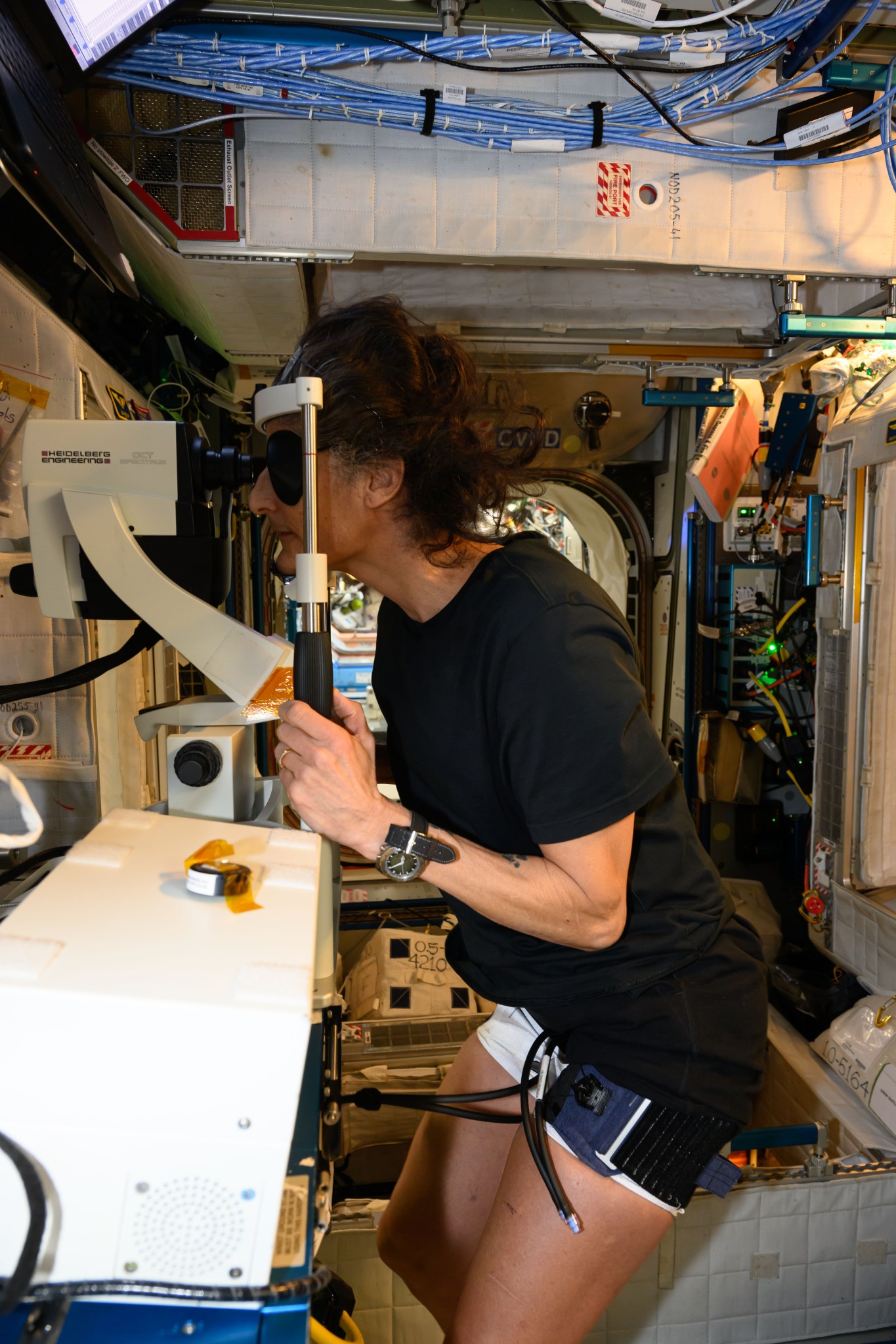Astronauts Study Vision Changes Caused by Spaceflight on ISS

NASA astronaut Jonny Kim, alongside JAXA astronaut Takuya Onishi, has been conducting eye ultrasounds aboard the International Space Station (ISS) to better understand vision changes experienced by astronauts during extended missions. Research shows that many astronauts report needing stronger reading glasses after spending six months or more in microgravity. This phenomenon, termed Space-Associated Neuro-Ocular Syndrome (SANS), involves swelling of the optic disc and alterations in the shape of the eye.
The unique environment of microgravity causes a shift in blood and cerebrospinal fluid towards the head, which researchers suggest may be a contributing factor to SANS. Currently, the investigation known as Thigh Cuff is exploring whether applying tight cuffs to the legs can influence fluid movement in the body, particularly around the eyes and heart. If successful, these cuffs could serve as a countermeasure against fluid shift-related issues and potentially help mitigate SANS, benefiting future missions to the Moon and Mars.
Fluid Shifts and Vision Impairment Research
NASA’s Fluid Shifts investigation, conducted from 2015 to 2020, was the first to document changes in cerebral blood drainage in microgravity. The Vision Impairment and Intracranial Pressure (VIIP) study further examined the impact of fluid shifts on brain pressure and the development of SANS. This research involved comprehensive clinical eye exams, retinal imaging, and magnetic resonance imaging of the eye and optic nerve, alongside questionnaires completed by approximately 300 astronauts regarding their vision changes during missions.
One noteworthy study detailed the potential of a head-mounted virtual reality display for non-invasive assessments of SANS. Furthermore, researchers identified that measuring the optic nerve sheath diameter could be an effective method to detect eye and vision changes during spaceflight.
Another analysis focused on an astronaut who experienced significant vision changes after a six-month mission, highlighting environmental factors such as B vitamin supplementation and reduced cabin carbon dioxide levels as possible influences on symptom improvement.
Advancements in Understanding Eye Health in Space
The SANSORI investigation, led by the Canadian Space Agency (CSA), utilized Optical Coherence Tomography to assess whether reduced stiffness in eye tissues contributes to SANS. Changes in the mechanical properties of ocular tissues during long-duration spaceflight could provide insights into similar conditions on Earth, including aging-related diseases like glaucoma and myopia.
Additionally, the MHU-8 investigation from JAXA examined genetic alterations in mice post-spaceflight, revealing changes in the optic nerve and retinal tissue. The findings suggested that artificial gravity might mitigate these changes, presenting a potential countermeasure for future missions.
These studies aim to enhance the understanding of vision impairment in astronauts and may hold implications for treating similar conditions on Earth. As research progresses, the insights gained from the ISS could pave the way for better health outcomes for both space travelers and individuals facing vision challenges on the ground.






